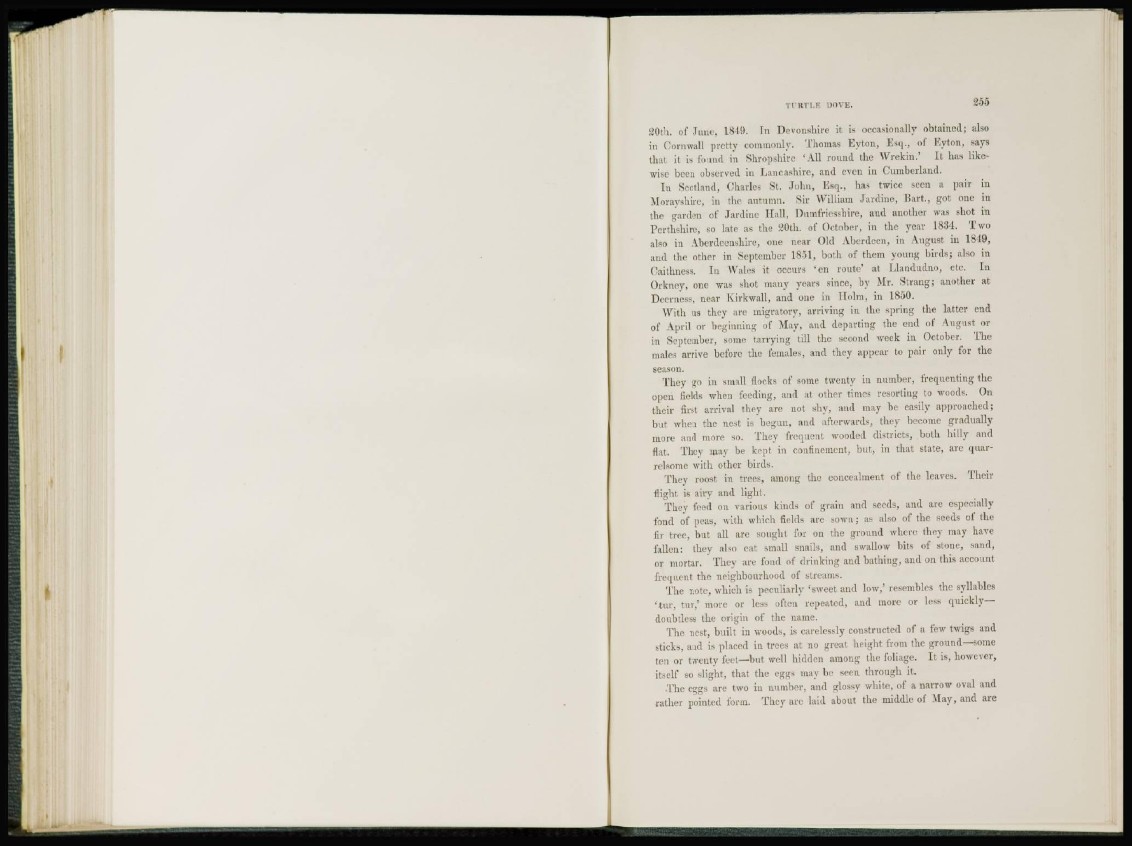
TURTLE DOVE. 2ÖÖ
20th. of June, 1849. In Devonshire it is occasionally obtained; also
in Cornwall pretty commonly. Thomas Eyton, Esq., of Eyton, says
that it is found in Shropshire 'All round the Wrekin.' It has likewise
been observed in Lancashire, and even in Cumberland.
In Scotland, Charles St. John, Esq., has twice seen a pair in
Morayshire, In the autumn. Sir William Jardine, Hart., got one in
the garden of Jardine Hall, Dumfriesshire, aud another was shot in
Perthshire, so late as the 20th. of October, in the year 1834. Two
also in Aberdeenshire, one near Old Aberdeen, in August in 1849,
and the other in September 1851, both of them young birds; also in
(•aithness. In Wales it occurs 'en route' at Llandudno, etc. In
Orkney, one was shot many years since, bv Mr. Strang; another at
Deerness, near Kirkwall, and one in Holm, in 1850.
With us they are migratory, arriving in the spring the latter end
of April or beginning of May, and de-parting the end of August or
in September, some tarrying till the second week in October. The
males arrive before the females, and they appear to pair only for the
season.
They go in small nocks of some twenty in number, frequenting the
open fields when feeding, and at other times resorting to woods. On
their first arrival they are not shy, aud may be easily approached;
but when the nest is begun, aud afterwards, they become gradually
more aud more so. They frequent wooded districts, both hilly and
Hat. They may be kept in confinement, but, in that state, are quarrelsome
with other birds.
They roost in trees, among the concealment of the leaves. Their
night is airy and light.
They feed on various kinds of grain and seeds, and are especially
fond of peas, with which fields are sown; as also of the seeds of the
fir tree, but all are sought for on the ground where they may have
fallen: they also eat small snails, and swallow bits of stone, sand,
or mortar. They are fond of drinking and bathing, and on this account
frequent the neighbourhood of streams.
The note, which is peculiarly 'sweet and low,' resembles the syllables
' t u r , tur,' more or less often repeated, and more or less quickly—
doubtless the origin of the name.
The nest, built in woods, is carelessly constructed of a few twigs and
sticks, aud is placed in trees at no great height from the ground—some
ten or twenty feet—but well hidden among the foliage. It is, however,
itself so slight, that the eggs may be seen through it.
The eggs are two in number, and glossy white, of a narrow oval and
rather pointed form. They arc laid about the middle of May, and are